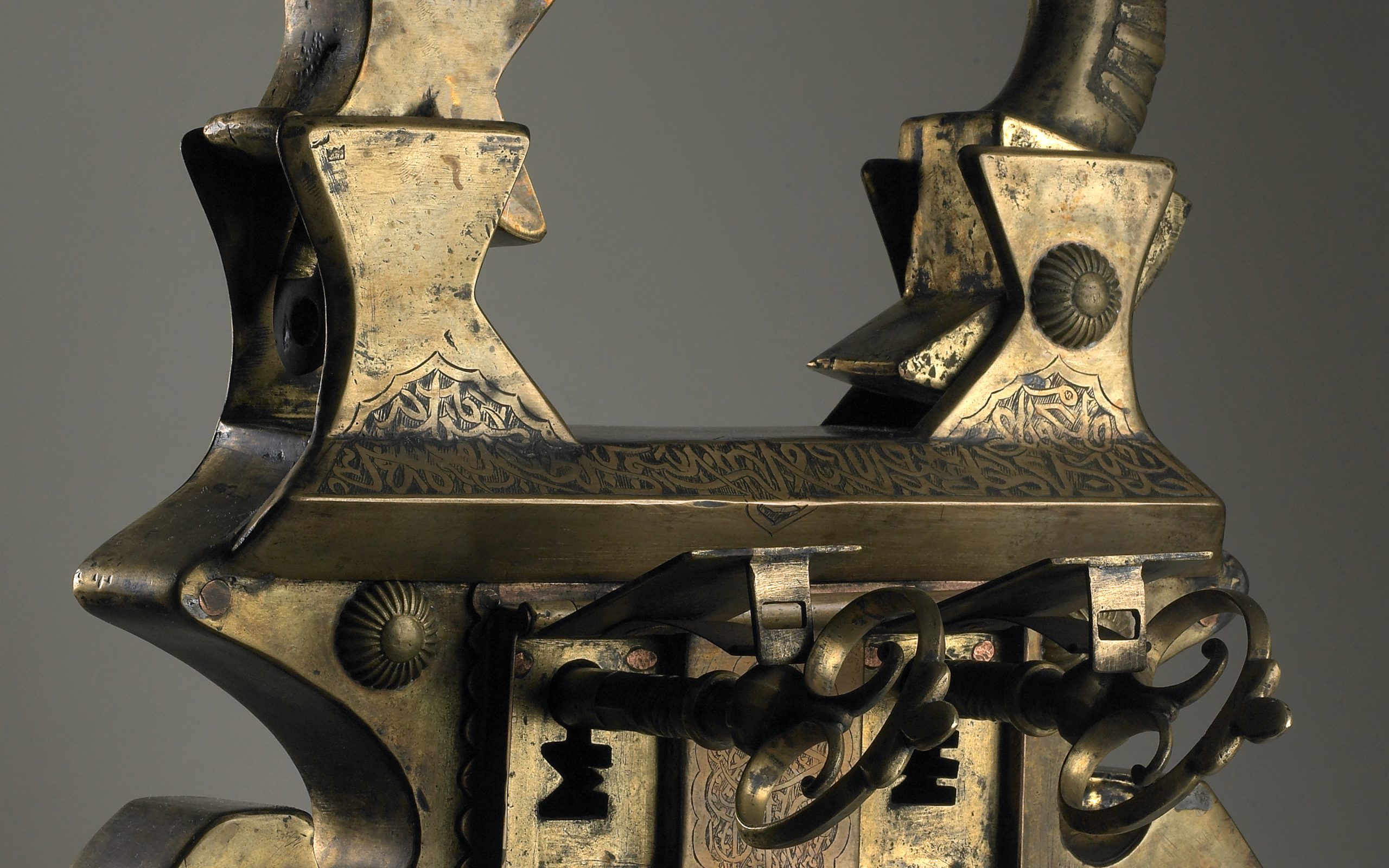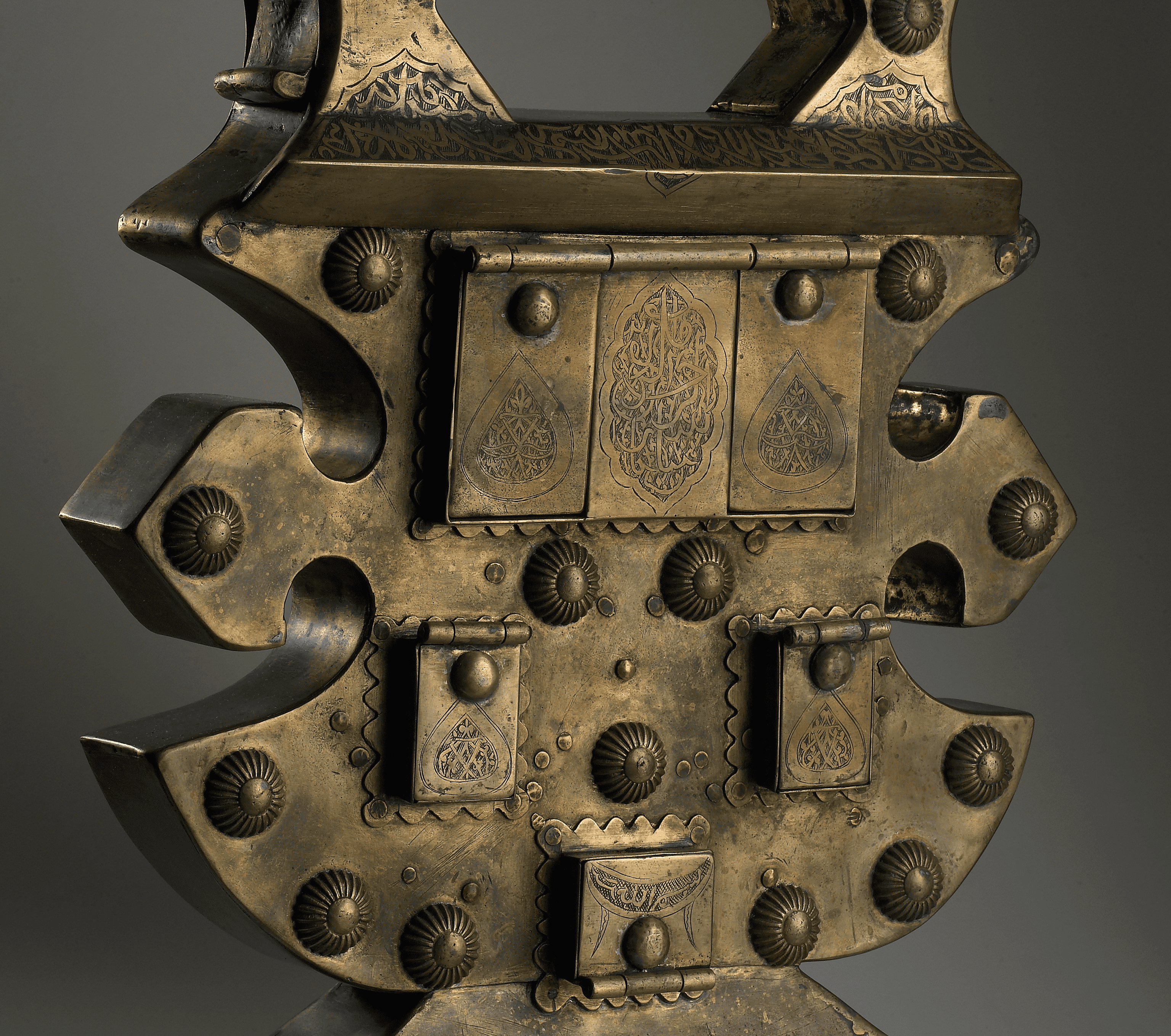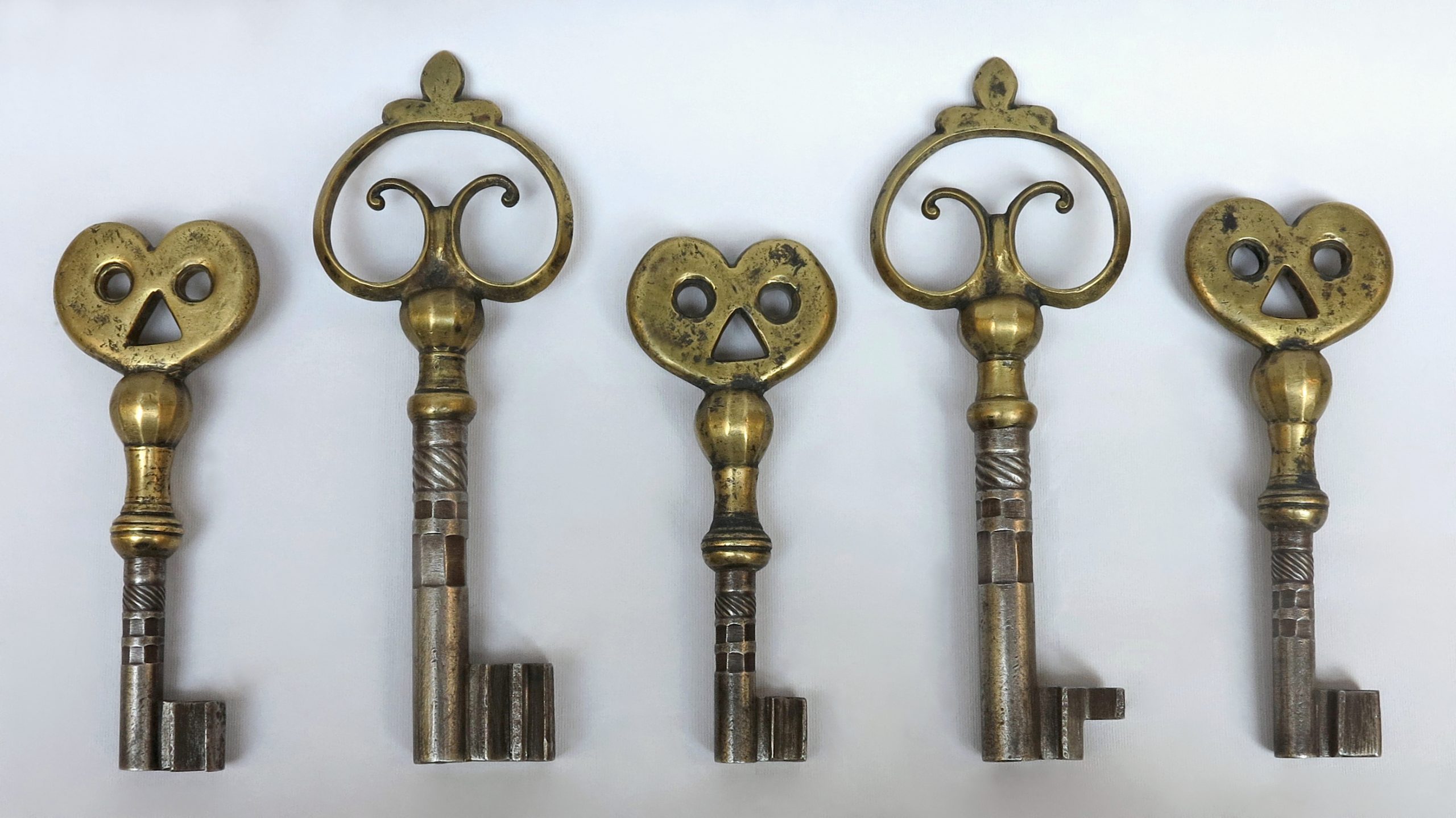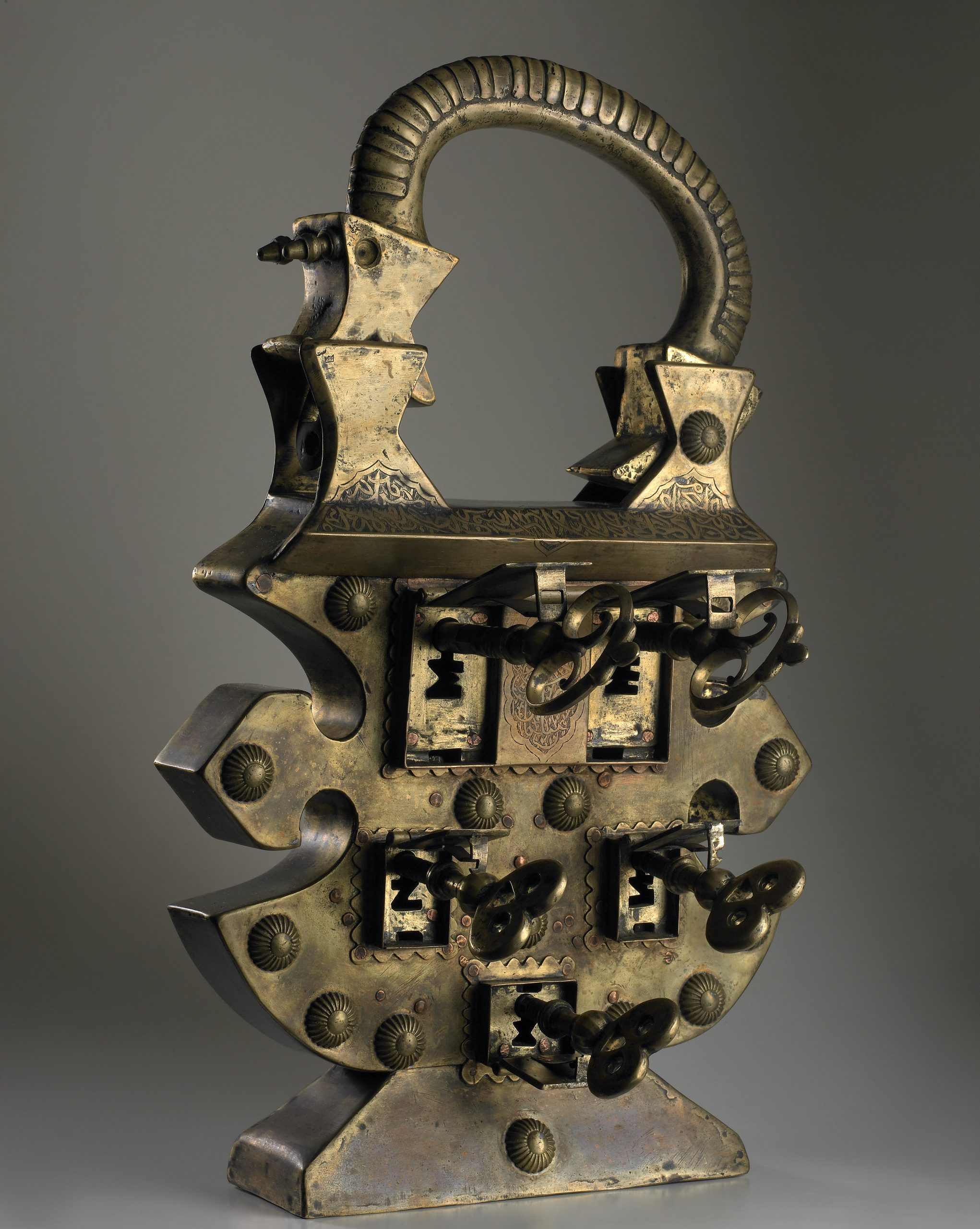
An imposing Ottoman padlock
Known and widespread since Ancient times, padlocks are portable locks used for locking boxes, chests, furniture and other domestic containers as well as for closing doors and gates of houses, cities and sacred places.
Over the centuries, especially in the vast geographical area from Turkey to India, many padlocks of different shapes, sizes and types have been produced, mainly made of brass and bronze.
The monumental specimen presented here has an Ottoman origin, as is evident from its characteristic arabesque decoration, and represents constitutes a rare and remarkable witness in its kind, in terms of size, shape, complexity of the mechanism and state of preservation.

To the present stage of our studies, no other similar examples are known in public or private collections; the only comparable padlock, in terms of shape and size, is a Persian specimen that appeared on the market a few years ago, bearing a dedication to the Prince of Baban Khalid Pasha and dated 1730.
Our padlock is made of a massive body with a mixtilinear profile, a front surface adorned with fifteen studs and five rectangular secret patch covers, and a round arch distinguished by a pod-like decoration. In addition, unlike most padlocks, this unusual specimen has a trapezoidal prismatic base that allows it to rest stably on a flat surface.

The padlock’s complex opening and closing mechanism is operated by five large keys with brass handles and iron shafts decorated with geometric patterns. Two of these keys have an arched handle with scrolls while the other three have a heart-shaped handle with geometric fretwork.
The extraordinary weight and size of this object make it unlikely that, although perfectly working, it was made for normal everyday use. As is often the case in the Islamic world, but not only, in some objects a highly symbolic function is added to the utilitarian one, so it is likely that it was constructed either as a masterpiece by a great metalworker or to preside over an important religious or private building – such as a mosque or an imperial palace – in a solemn and blatant manner.

PADLOCK
Ottoman Empire
Engraved brass; wrought iron
19th century
Cm 38 x 62h
© 2013 – 2024 cesatiecesati.com | Please do not reproduce without our expressed written consent
Alessandro Cesati, Via San Giovanni sul Muro, 3 – 20121 Milano – P.IVA: IT06833070151